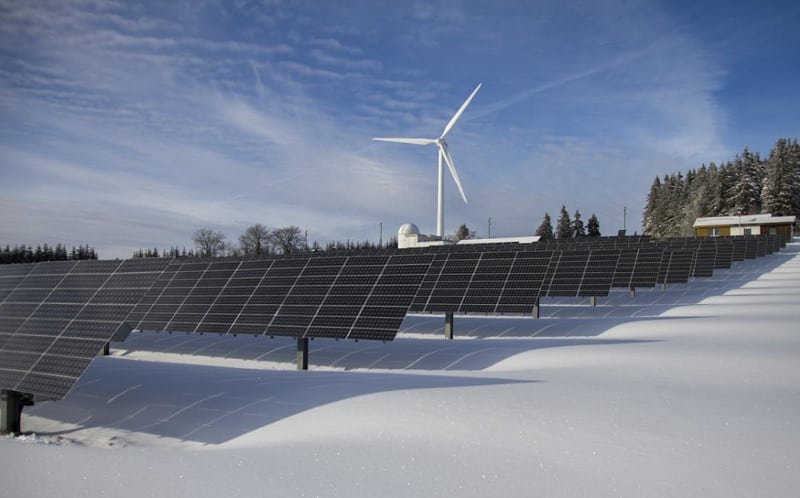The urgency of climate change and resource depletion has sparked a global wave of innovation. Forward-thinking individuals and organizations are developing groundbreaking solutions, shaping a more sustainable future for our planet.
This blog explores a glimpse into these exciting sustainability initiatives, showcasing how ingenuity is paving the way for a greener tomorrow.
1. Rethinking Agriculture: From Vertical Farms to Regenerative Practices
Traditional agriculture can be resource-intensive and contribute to environmental degradation. Innovative solutions are revolutionizing the way we grow food:
- Vertical Farming: These urban farms stack growing spaces vertically, maximizing production in minimal space. They often use hydroponics (water-based nutrient delivery) and LED lighting, reducing water usage and reliance on sunlight.
- Regenerative Agriculture: This focuses on improving soil health and biodiversity. Practices like cover cropping and no-till farming enhance soil fertility, reduce water needs, and capture carbon dioxide from the atmosphere.
- Precision Agriculture: Utilizing sensors, data analysis, and automation, precision agriculture optimizes resource use by targeting fertilizer, water, and pesticides only where needed, minimizing waste and environmental impact.
2. Circular Economy: Rethinking Waste as a Resource
The traditional “take-make-dispose” model is no longer sustainable. The circular economy promotes waste reduction, reuse, and recycling, minimizing environmental impact. Exciting initiatives include:
- Biodegradable Packaging: Replacing traditional plastic packaging with materials derived from plants or algae helps reduce plastic pollution and promote composting.
- Product as a Service (PaaS): This model focuses on providing access to products instead of ownership. Companies retain ownership, maintain products, and upgrade components, extending product lifespans and reducing waste.
- Upcycling: Giving new life to discarded materials is a cornerstone of the circular economy. Upcycling initiatives transform used materials into valuable products, diverting waste from landfills.
3. Renewable Energy Revolution: Powering the Future Sustainably
Fossil fuels are a major contributor to climate change. Renewable energy sources offer clean, sustainable alternatives. Here’s how innovation is driving the shift:
- Offshore Wind Farms: Wind farms situated further out at sea can harness stronger winds, generating more energy with a smaller footprint on land. Floating wind farms are also being developed for deep-sea applications.
- Solar Power Innovation: New solar panel technologies are improving efficiency and affordability. Perovskite solar cells, for example, hold promise for lightweight and flexible solar panels with even higher efficiency.
- Energy Storage Solutions: Efficient energy storage solutions like advanced batteries are crucial for integrating renewable energy sources with existing grids, allowing for greater reliance on clean energy.
4. Smart Cities: Technology for a Sustainable Future
Cities are major consumers of resources and energy. Smart city initiatives leverage technology to create more efficient and sustainable urban environments:
- Smart Grids: These grids use technology to monitor energy use, optimize distribution, and integrate renewable energy sources, reducing energy waste and improving grid stability.
- Connected Transportation: Smart traffic management systems and electric vehicle infrastructure promote sustainable transportation options, reducing traffic congestion and air pollution.
- Waste Management Innovation: Sensor-based systems optimize waste collection routes, while new technologies like bioconversion can transform waste into valuable resources.
5. Sustainable Materials and Technologies: Rethinking How We Build
The construction industry consumes a significant amount of resources and energy. Innovative materials and technologies are promoting sustainable construction practices:
- Biodegradable Building Materials: Utilizing materials like mycelium (fungus root network) or bamboo creates eco-friendly alternatives to traditional construction materials.
- 3D Printing for Construction: This technology offers the potential for faster, more efficient construction with reduced waste generation compared to traditional methods.
- Energy-Efficient Building Design: Sustainable building design principles prioritize natural light and ventilation alongside high-performance insulation, minimizing reliance on heating and cooling systems.
The Road to a Sustainable Future: Collaboration is Key
These innovative initiatives offer a glimpse into a future where technology and ingenuity shape a more sustainable world. However, collaboration is crucial. Governments, businesses, and individuals need to work together to implement these solutions on a large scale.
By embracing innovation, fostering collaboration, and taking individual action, we can shape a brighter, more sustainable future for generations to come. This journey starts with each of us. Let’s become active participants in building a world that thrives in harmony with the environment.
